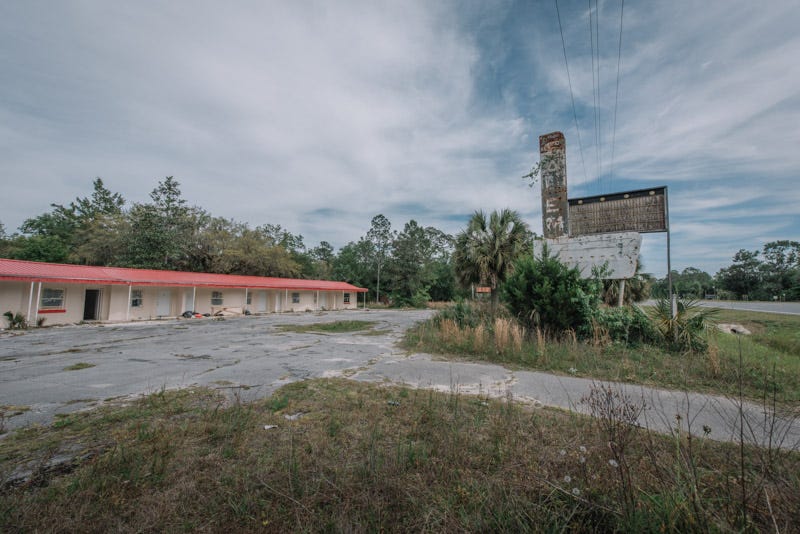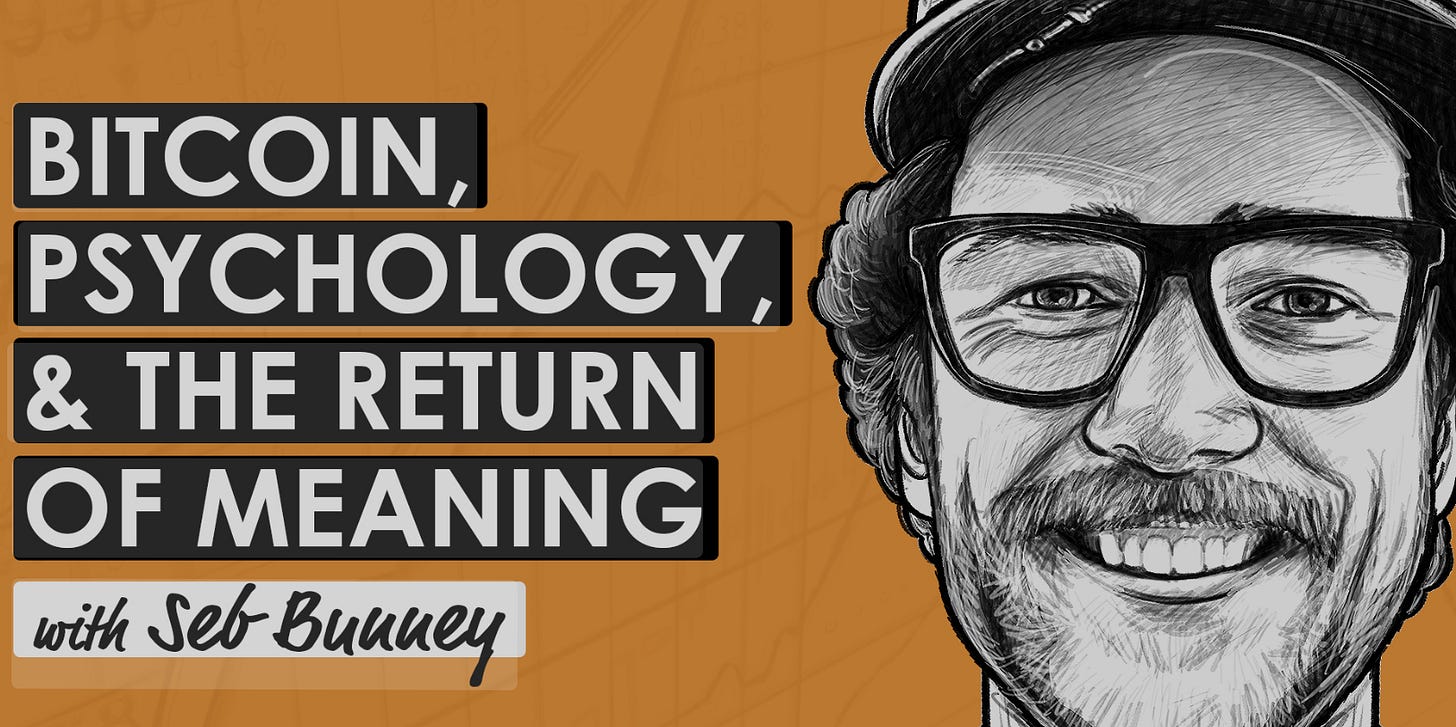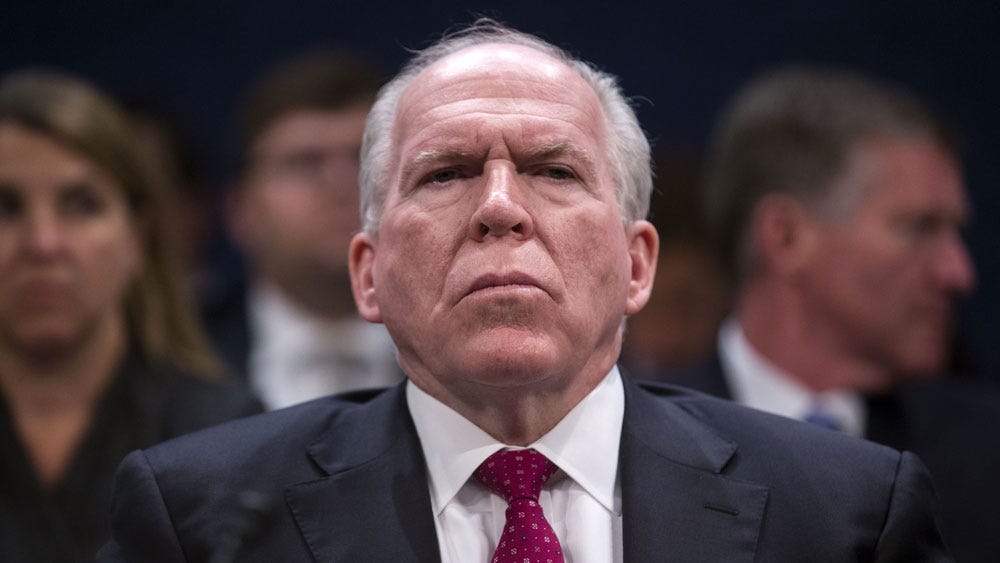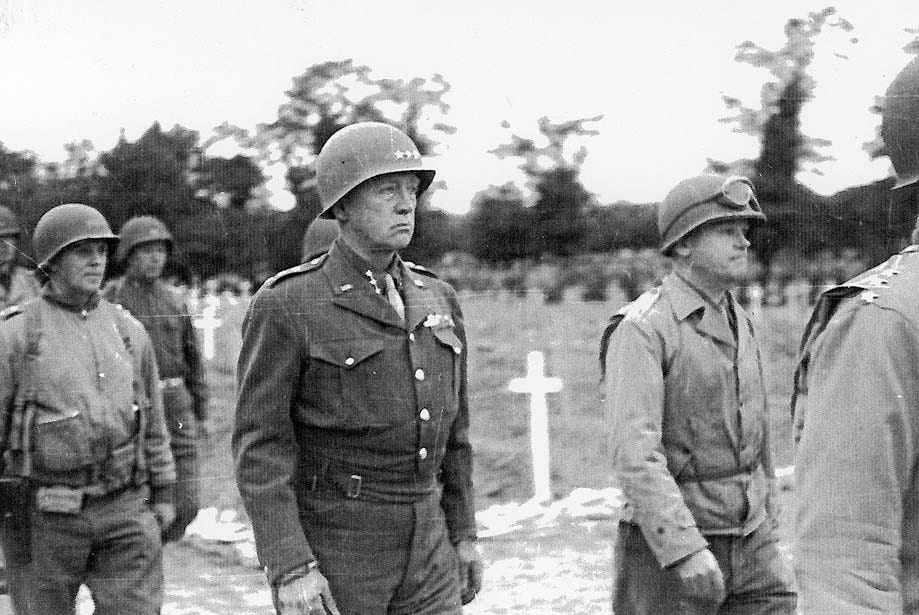The Dying Empire
July 2025
The alarm screamed at 5 a.m., slicing through the Wyoming sunrise. Some mornings, getting up feels like a betrayal of your soul. This was one of them. A 12-hour plus
drive loomed—Wyoming to Minnesota, a trek requiring grit and a soldier’s mindset. You know what’s coming: endless road, white monster energy drinks, and the hum of tires on pavement.
Step one: Point the car westward on I-80, then hook north on I-25 in Cheyenne. George Strait’s “I Can Still Make Cheyenne” plays in your head as Wyoming’s rugged story unfolds—jagged peaks and wide skies that defy description. But as you cross into Nebraska, the landscape shifts, and so does the story.
I ditched the Eisenhower interstate system for the old highways—brick roads winding past deserted elementary schools with broken windows and faded ice cream shops. You didn’t drive on the old highways to make good time, but to have a good time. The interstate is faster, sure, but it’s lonely, bypassing the soul of America’s heartland. In the 1800s, pioneers didn’t zip along I-80 in SUVs. They rattled across these plains in covered wagons, chasing dreams on paths now lined with Dollar Trees and VFWs.
Soft rock from the 1970s and 1980s—like Steve Miller Band and the Eagles—hits differently as you roll past ghost towns left by the American Dream. You can feel the small towns once buzzing with life, now clinging on to memories of the glory days. The railroads that built these towns are long gone, replaced by walkways and abandoned telegraph poles.
Despite having the better days behind them, the Stars and Stripes still fly high in these towns. A rusted ’59 Chevy (or “Chivy,” as my grandpa would say) sits proudly by the road, as an American flag flaps in its bed. Every Main Street is lined with flags, and one house had twelve American Flags flying in the yard. These towns wear their love for country like a badge, but you can’t help but think that the love has not been returned
Liquor stores with bars on their windows dot the landscape, a stark contrast to the pride of America. The heartland’s patriotism is fierce, but beneath it lies a quieter story—hopelessness. I think about a homeless vet I saw in Denver during the COVID days, an American flag on his backpack as he drank a shooter sitting on the sidewalk near the desolate 16th Street Mall. That image, like these towns, sticks with you.
Flyover country isn’t just a geographic term—it’s a state of mind, a place where resilience battles neglect. The opioid crisis and addiction epidemic didn’t bloom in prosperous times. While big cities grab headlines, these small towns fight to survive. What are we doing to change the narrative? To honor the patriotism that still burns in places the world seems to have forgotten?
The graph above shows people are escaping the hopelessness. Tomorrow isn’t a factor in decisions. Drug overdose rates have quadrupled from 2003 to 2023. And when you drive through these towns, it makes sense. As jobs have left America, hope has left these towns. The excitement of building a new town has been replaced by the few trying to hang on. The reality is that this is not just in one spot across the country, but all small towns eventually bypassed by interstates.
Fixing this is no easy task, and I’m grateful it’s not my job to do so. Bringing back quality jobs is the only way it works. If you can’t make the money required to provide for your family in these rural towns, how can you stay there? Politicians need to step up to the plate and change the narrative. You signed up for this, now stop chasing headlines and start fixing the heartland. Low interest rates and low inflation have been great for the big cities, as fly-over country has been gutted. Maybe it’s time to let the highly indebted dog walking apps in the cities die and bring back where America was born.
If you listen to one podcast this month, I’d recommend this one:
BTC239 Podcast: Bitcoin, Psychology, & the Return of Meaning w/ Seb Bunney
The emotional toll of a fiat currency is something that most people have never even thought of, including myself. Our parents told us to work hard and that anything is possible. But what happens when you follow the rules and you can’t even pay your bills? Sadly, this is a reality for too many people. What can you afford on $15/hour? You can’t support yourself on those wages, let alone a family.
Most people strive for the 3 Ps: prestige, power, and possessions. This is what they lead you to believe brings happiness in life, yet only when you acquire the 3 Ps do you realize how untrue it is. What brings happiness is the 3 Cs: connections, contributions, and challenges. Understanding that money is just exchanging your energy for work makes you want to be a master energy allocator, as it is a finite resource. Your energy is your earnings power.
The fiat system has gradually declined our earnings power since 1971, when the dollar left the gold-backed system. As earnings power declines, the cost of living rises, and life sucks. That energy you trade for earnings gets weaker and weaker as you work harder and harder. 74% of Americans and Canadians live paycheck to paycheck, and 40% of millennials work a side job. Society is breaking down just trying to survive.
Focusing on survival leaves you with some fear that you might not make it. Then, as we become more fearful, our awareness narrows. Think about that for a second. As we become more fearful of not meeting our financial obligations, the ability to recognize what is going on around us narrows. You are not thinking about what inspires you and makes you fulfilled when you spend all of your time trying to survive. You are not thinking about what fills your cup when you chase a career you don’t give a shit about because you need the money. No wonder we are seeing record levels of mental illness — depression, anxiety, etc.
We have half the single income earners, double the dual income earners. When both parents are working 50 hours per week to pay the bills, what does this do to the children? You can’t instill values in children when parents aren’t around. Our children are being raised by their friends and TikTok.
The value of one dollar in 1945 compared to the value of one dollar in 2025 is $17.65. The average price of a home in 1945 was $4,000. So, in 2025, using the same math, the average home price should be $70,000. The real average home price in 2025 is $530,000. A quick $476,000 of monetary premium due to a fiat system where investors are searching for any way possible to store purchasing power in assets.
The fiat system has left us with broken rural communities and increasingly meaningless lives, striving to make ends meet. Life is so much easier with a currency that does its job — holds value.
Luckily, there is a way to remedy the situation that I will discuss in the investments section.
A lot has happened since the last newsletter on the world stage, including the Iran/Israel war. I know I am a little late to the party, but it’s still worth discussing, as war always has implications for the future. Wars are never simple, and we are still dealing with second and third-tier effects from WWII. I once heard a man I worked with screaming how he didn’t want to learn Japanese inventory management systems because the Japs shot his uncle in WWII. And this was in 2020. Generations don’t forget.
It is never the men and women on TV or social media platforms impacted by the war. It is the mothers and fathers sending their sons and daughters over oceans, directed by talking head politicians selling the idea that it’s their duty to die for their country. But for what? All we have seen at home is politicians and the wealthy gain at the expense of the middle class. Sacrificing younger generations for political fallacies overseas isn’t the way to motivate modern-day soldiers.
The events in Iran are not WWIII, which started years ago. WWIII began when Russia started buying gold in 2008 to bypass American sanctions. This was way before the Trump administration or even Russia invading Ukraine. You can’t blame Trump for the American foreign policy legacy of loving war. Whether we elect George H.W. Bush or Barack Obama, we always seem to get a John Brennan—the man who used terrorism as his weapon to keep the U.S. in the Middle East forever.
The Iranian situation goes back to 1953. WWII had finally come to an end, and the war made it clear that oil was going to be the backbone of any new world economy. Iran decided to nationalize oil. What does that mean? Any profits from Iranian oil would be directed back to help the Iranian people. Before Iran made that decision, Britain had been in charge of Iranian oil via the Anglo-Iranian Co. Post WWII, Great Britain was a washed-up empire of what it once was, and Iran recognized this was the moment to make their move.
The only thing Great Britain could do to maintain control over Iranian oil was phone a friend. And that friend happened to be the post-WWII new superpower of the world, the United States of America. Eisenhower was president in 1953 and after leading the Allied troops in Europe, he was war averse. Sending in the CIA was a much more lucrative option for the old five-star General. Kermit Roosevelt Jr, the grandson of Theodore Roosevelt, was the chosen one for the job. Overthrowing the dual elected Prime Minister Mohammad Mosaddegh to protect western oil interests turned into a mess, but Kermit got the job done. And it is still the main cause of tensions between the United States and Iran to this day.
The United States is still dependent on the cheap flow of oil from the Middle East, as Iran supplies 24% of the global oil supply today. If Iran were to cut off its inventories to OPEC, it would cause an instant 25% increase in the price of oil at your local gas station. For this reason, Iran is the largest threat to the stability of our economy, and the volatility of Iran does not give Western leaders the warm and fuzzies. And then you add in funding Hamas and proxy wars against the U.S., it proves Iran’s commitment to instability, and no threat by the U.S. has slowed this down.
The elephant in the room is the U.S. relationship with Israel. All political leaders tend to shy away from commenting on this relationship, but it does make sense. Israel is the most Western-oriented nation in the Middle East, a place of extreme religion and anti-Western sentiment. Without Israel, the U.S. may have already collapsed via economic attack by hyperinflating the price of oil. Is Israel the problem child of the Middle East, or are they just taking orders from their big brother, the United States, to protect America’s interests in cheap oil?
One way Americans convince themselves to support the United States-Israel relationship is through religion. Israel is a big deal in Christianity due to what the bible has to say about the end times. Israel must exist for Christ to return. Here is Ted Cruz using the bible to justify Israel support:
Most of the Christian regions of Israel don’t even believe this. In Jerusalem, there are large gift shops where you can buy t-shirts and trinkets about how the rapture is going to begin in Israel. No one takes something seriously if they create a gift shop out of it.
If there is one thing American leadership does well, it’s create alliances. Much like the United States-Israel alliance, you may have heard of this thing called NATO. Like Israel, NATO conveniently buys all weapons, fighter jets, tanks, and weapons systems from the United States. You would be a fool to think U.S. interests are not benefited by stirring the pot around the world. The Ukraine-Russia war, the October 7th Hamas attack on Israel, and the Iran-Israel conflict all have one common thread — U.S. influence.
The U.S. does its best to play off any involvement in these conflicts, but it’s no coincidence that every president for the last five decades has been drug into some kind of situation diminishing the domestic agenda. LBJ had his war on drugs ruined by the Vietnam War. Nixon wanted to fix healthcare and restore the natural environment, also disrupted by the Vietnam War. Reagan’s dream was to reinvent the government and drastically make it smaller until the Iran-Contra and MX Missile got involved in the administration. George H.W. Bush had his Thousand Points of Light volunteer program halted by the Persian Gulf War. Bill Clinton also wanted to fix healthcare and open trade disrupted by Kosovo and Iraq. George W. Bush wanted to fix entitlements until the biggest attack since Pearl Harbor happened on U.S. soil with 9/11. And finally Barack Obama won the presidency by not being George W. Bush and ending all wars, only to see soldiers spend his whole presidency in caves of Afghanistan.
Trump was the one person who could fight the blob, yet now he has the same decision staring him in the face as the others before him. Will he continue to fight with Iran or focus on his agenda? The machine is working hard to give him no choice but to continue the conflict with Iran. In the last couple of days, Trump has come out and said that if they feel Iran is attempting to make any progress with their nuclear program, more attacks will be warranted. Here we go again. You can always watch for the continued use of our aircraft carrier in the Middle East, aka Israel, to keep America from being directly involved before we strike.
The 12 days of bombing between Iran and Israel felt like a year, but thank god a “ceasefire” was reached. If you want to call it that. It always seems like random missiles are being shot or bombs are going off in the Middle East. They have been fighting like this for thousands of years. Now we have the luxury of getting the entire globe involved due to social media. It is hard to keep fighting a war without the citizens of your nation engaged. Look at Vietnam. Fighting a war abroad is difficult enough without fighting one at home against protesting citizens. The majority of Americans don’t support the endless wars in the Middle East, which is part of the reason Trump won. Americans thought he would stop the endless wars. It’s hard for Americans to support these wars as Main Street has been hollowed out for the benefit of Halliburton and Lockheed Martin to crater out Jalalabad and Baghdad.
Of course, Trump took credit for the quick military action and mission success, but is there more to the story? Quietly behind the front lines, ammunition stockpiles were diminishing for Israel due to a rare earth supply squeeze by China. The Israeli attacks started on June 13th, and by June 24th, Israel had 12 days of missile inventory remaining, while Iran could have continued for years. Not exactly a showing of strength, but how do you hide it from your enemies? Maybe organize a ceasefire and declare a successful mission? How convenient. The rare earth magnet story will continue as China has planned this for decades and is now quietly controlling the world’s militaries via rare earth exports. The U.S. will surely set up its supply chains. The real question is, if you are China and want to be the next world Superpower, why would you wait for the U.S. to gain these capabilities before you make a move to prove that you are the new #1 Superpower?
Lifestyle
We need to get back to learning from the greatest men in history. General George S. Patton is the greatest military leader the United States has ever seen. Listen to the podcast below and apply the Patton principles to your life.
Who was General Patton?
General George S. Patton was a firestorm in human form, a warrior whose name still rumbles like a tank engine through the annals of history. He was a man carved from grit and audacity, with a stare that could pin a soldier to the wall and a voice that roared like artillery fire. Standing tall, his polished helmet gleaming under the sun, Patton was the embodiment of relentless drive, his ivory-handled revolvers slung low like a gunslinger ready to duel fate itself. His mind was a battlefield map, always three moves ahead, blending brute force with a poet’s flair for strategy. He didn’t just lead men; he ignited them, his speeches crackling with raw, unapologetic conviction—equal parts inspiration and intimidation.
Patton was a paradox: a scholar of war who read history like scripture, yet a brawler who’d rather charge than deliberate. His Third Army tore through Europe like a steel tornado during World War II, liberating towns and smashing Nazi lines with a speed that left enemies reeling. He was fearless, flawed, and larger than life—court-martialed for his temper, revered for his genius, and driven by a belief that he was destined to conquer. Love him or loathe him, Patton was a force of nature, a man who didn’t just fight wars but lived them, leaving a legacy as bold and unyielding as the man himself.
Investments
Keep reading with a 7-day free trial
Subscribe to The Rover to keep reading this post and get 7 days of free access to the full post archives.










